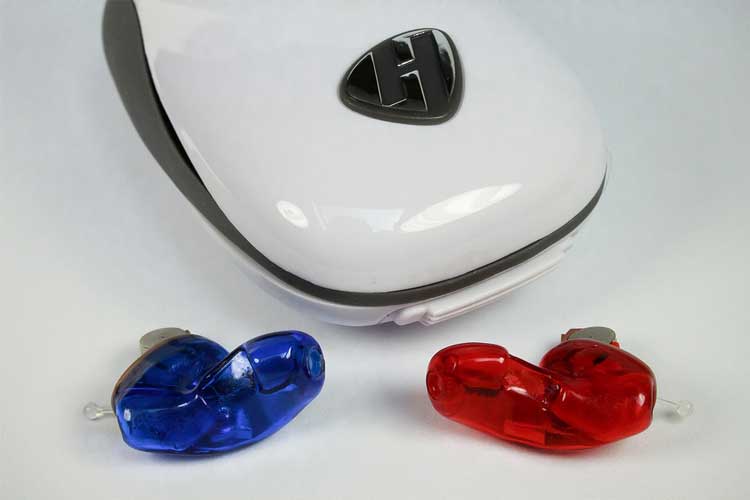Hearing loss can have a big impact on your life, from your job, your relationships and your emotional well-being. That’s why hearing aids can make a big difference, especially if you pick the right ones and get help adjusting to them.
Are you looking for a high-end hearing aid? Find out about the types of models available on the market.
Summary
How does the device work?
A hearing aid is a battery-powered electronic device designed to, as the name suggests, improve your hearing. Small enough to be worn in or behind the ear, they make certain sounds louder. They can help you hear better, whether in a quiet or noisy place. Here is how they work:
- A microphone picks up sound around you.
- An amplifier makes the sound more audible.
- A receiver sends these amplified sounds to your ear.
Not all people with hearing loss can benefit from a hearing aid. Only 1 in 5 people who are likely to have improvement can wear it. Most of the time, these hearing aids are intended for people who have damage to the inner ear or the nerve connecting the ear to the brain. Damage can come from illness, aging, loud noises, medication, etc.

The main types of hearing aids
So that you can better choose the right model, know that there are two main types of hearing aids:
Analog hearing aids convert sound waves into electrical signals and then make them louder. They are generally less expensive and have simple volume controls.
Digital hearing aids convert sound waves into digital codes similar to computer codes and then amplify them. The code includes information about the direction of a sound and its pitch or volume. This makes it easier to tailor the sound to your needs, wherever you are. Most will adapt automatically. Although this type of device costs more than an analog hearing aid, the results are much better. They are also smaller and more powerful.
The main styles of hearing aids
We can distinguish three main styles of hearing aids. They differ in size, placement in or on the ear, and ability to make the sound louder.
- Intra-duct or ITC hearing aids: fit inside the ear and are more difficult to see.
- In-ear or CIC hearing aids: are smaller and almost hidden in your ear. Due to their size, they can be more difficult to adjust and remove. This type of hearing aid is not ideal for children or adults who might have problems with very small devices.
- The invisible in-ear hearing aid or IIC: is almost impossible for others to see. You can put it on every morning or wear it for several months in a row.
- In-ear or ITE hearing aids: fit completely inside your ear. They have a hard plastic case that contains all the electronics. Note that they are best suited for people with mild to severe hearing loss. However, they are not recommended for children whose ears are still growing.
- Behind-the-ear or BTE hearing aids: are placed in a hard plastic case behind the ear. A plastic tip fits inside the ear and directs sound. Another type, called a mini-contour, sits entirely behind your ear, with a narrow tube that goes into your ear canal. This helps prevent the buildup of earwax. Bevels can work for mild to severe hearing loss, but they are not suitable for everyone.
- Models with remote or RIC earpiece and those with in-ear or RITE earpiece: both have a component behind the ear. This connects to an earpiece placed inside the ear canal with a small wire. They allow low frequency sounds to enter the ear naturally and high frequency sounds to be amplified by the hearing aid.
All of these types of hearing aids are available on Ideal Audition.

Maintenance of a hearing aid
Your hearing aids will last much longer if you take good care of them. Some tips to keep in mind:
- Keep them away from heat, moisture, hair care products, children and pets.
- Clean them according to the instructions.
- Switch off the device when not in use.
- Replace used batteries immediately.
Hearing aid batteries can last from several days to a few weeks. Their lifespan depends on the type of battery, the power requirements of the hearing aid and the frequency of use.
In general, hearing aids can last 3 to 6 years. As some of the best hearing aids, in-ear models give you more flexibility as they can be programmed for more severe hearing loss.
Learn more about hearing aid reimbursement by clicking here.






